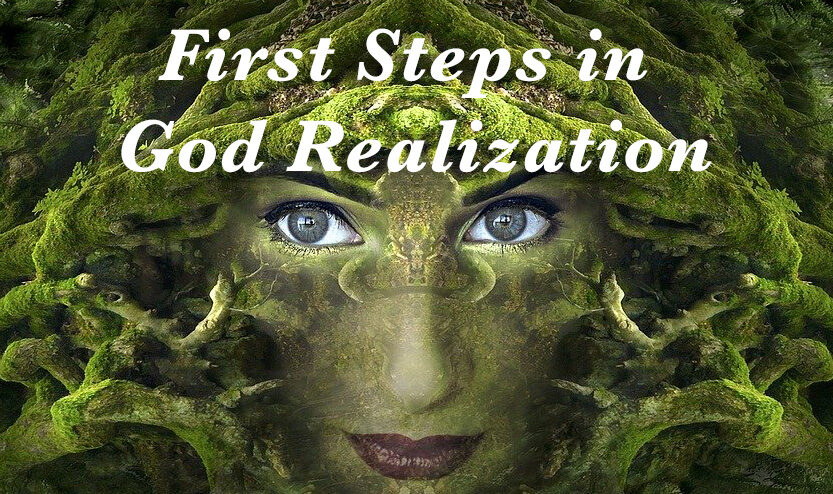“I am the Taste of Water”
The Bhagavad-gita[1] contains a statement from Krishna that illustrates how easily we can raise our awareness of God, just by being conscious while drinking water:
O son of Kunti [Arjuna], I am the taste of water, the light of the sun and the moon, the syllable Om in the Vedic mantras; I am the sound in ether and ability in man. [2]
The translator, Srila Prabhupada comments: “This is the all-pervasive nature of the Supreme Personality of Godhead. We should mark the important word in this verse from the original Sanskrit: aham. Aham means ‘person,’” he says.
In monotheistic Hindu traditions, God is perceived as both a personal entity and an all-encompassing energy, illustrating the duality of divine presence. Krishna states later in the Bhagavad-gita: maya tatam idam sarvam jagad avyakta-murtina, “By Me, in My unmanifested form, this entire universe is pervaded. All beings are in Me, but I am not in them” (Verse 9.4); or, as French philosopher Voltaire once stated, “God is a circle whose center is everywhere and circumference nowhere.” [3]
To grasp God’s all-encompassing nature, consider the sun: its light and heat reach us from afar, symbolizing divine omnipresence and influence.
For example, when the sunshine enters your room, you say, “the sun is in my room.” Of course, if the sun were really in your room, you wouldn’t be around to talk about it. The point is that the sun globe and the sun rays are simultaneously one and different. In the same way, the impersonal, all-pervading energy of the Creator is simultaneously one with and different from the personal features of the Creator. God, the Supreme Person, and God’s omniscient energy are essentially the same thing, and yet distinctly different. Such is the inconceivable and apparently contradictory nature of the Supreme.
Realizing God through the simple act of drinking water is profound yet believable when we acknowledge the Supreme’s omnipresence, making divine connection accessible in daily life. After all, water is just one of the numerous energies that make up this mortal world. Logically, we must conclude: where there is energy there must be an “Energetic” — a source from which that energy flows. That energetic Source, according to the Vedas is Para-Brahman.[4]
The Bhagavat Purana contains a rich description of how we can perceive the presence of God’s all-pervading energy or universal form in nature:
O King, the rivers are the veins of the gigantic body, the trees are the hairs of His body, and the omnipotent air is His breath. The passing ages are His movements… (SB 2.1.33) …the clouds, which carry water, are the hairs on His head, the terminations of days or nights are His dress, and the supreme cause of material creation is His intelligence. His mind is the moon, the reservoir of all changes. (SB 2.1.34)
Beyond scriptures, the divine presence is evident in our lives if we pause to reflect, revealing God in the simplicity of everyday moments.
Mother Teresa championed contemplation as a path to God-realization, integrating it into her mission to inspire deeper spiritual awareness.
“Our life of contemplation shall…gather the whole universe at the very center of our hearts where the Lord of the universe abides, and allow the pure water of divine grace to flow plentifully and unceasingly from the source itself, on the whole of his creation.”
In her teachings, she urged people to become more thoughtful by taking the time to silence our rushed lives.
Silence is essential for soul connection, allowing us to experience the divine presence within and around us.
Slowing down and quieting our minds allows us to fully appreciate the present, uncovering the divine essence in our everyday experiences. Silence is golden. Author of The Ragged Edge of Silence: Finding Peace in a Noisy World, John Francis Ph.D. certainly believes so.
After an oil spill near the Golden Gate Bridge of San Francisco in January of 1971, Francis took a vow of silence and avoided riding in motorized vehicles for the next 22 years. A strong-willed and opinionated man, Francis decided to see what he could learn from listening and walking wherever he went. In sharing his experience, Francis learned that contemplation is an effective means to enhance our spiritual awareness because it helps us to discover who we really are — and ultimately — to find peace.
Lacking a natural quiet of a previous age, we can accept the benefits of meditation and silence as a way to counteract the anxiety and depression often generated through our association with a noise-polluted world.
Water uniquely nourishes our body, calms our mind, and uplifts our soul, serving as a conduit for divine connection and holistic well-being. In its purest form, it energizes our body through the process of hydrolysis; as calming tea, it can still our mind; as a transporter of higher vibrations it can inspire our soul, and its feminine qualities can embrace and nurture our entire being.
Embrace the transformative power of water, appreciating its role in fostering holistic well-being and deepening your connection to the divine.
Excerpt from FOOD YOGA — Nourishing Body, Mind, and Soul
Footnotes —
[1] Bhagavad-gita As It Is, by A.C. Bhaktivedanta Swami, published by Macmillan in 1972.
[2] Bhagavad-gita As It Is, Verse 7.8.
[3] Voltaire (1694–1778).
[4] Para-Brahman: term often used by Vedantic philosophers as to the “attainment of the ultimate goal.” There is only one Supreme Para–Brahman and all energies and other deities are expansions of this Para-Brahman.
FAQ
Q: How can drinking water lead to God realization?
A: Drinking water with mindfulness can elevate awareness of divine presence, as it represents one of the many energies of the Supreme, fostering a deeper spiritual connection.
Q: What is the significance of the sun metaphor in understanding God?
A: The sun’s omnipresent light and heat symbolize God’s pervasive energy, illustrating how divine presence can be experienced through its manifestations in the world.
Q: Why is contemplation important for spiritual awareness?
A: Contemplation helps quiet the mind, allowing individuals to reflect on divine presence and experience God in everyday life, enhancing spiritual awareness.
Q: How does silence contribute to God realization?
A: Silence fosters inner peace and reflection, creating a space for divine connection and deeper understanding of the self and the universe.
Q: What role does Mother Teresa play in promoting God realization?
A: Mother Teresa emphasized contemplation and silence as vital practices for experiencing God, integrating these into her mission to inspire spiritual growth.
Q: How does water symbolize divine connection?
A: Water nourishes the body, calms the mind, and uplifts the soul, serving as a medium for experiencing the divine and fostering holistic well-being.
Q: What is the dual nature of God in Hindu traditions?
A: In Hinduism, God is both a personal entity and an all-encompassing energy, reflecting the complex nature of divine presence in the universe.
Q: How can one experience God in daily life?
A: By being mindful of everyday actions and recognizing the divine energy in all things, individuals can experience God in the simplicity of daily life.
Q: What is the role of the *Bhagavad-gita* in understanding God realization?
A: The *Bhagavad-gita* offers insights into divine presence, illustrating how simple actions can elevate spiritual awareness and connect individuals to God.
Q: How does the concept of Para-Brahman relate to God realization?
A: Para-Brahman represents the ultimate source of divine energy, guiding individuals towards God realization through understanding the interconnectedness of all things. ##



Leave a Reply
You must be logged in to post a comment.